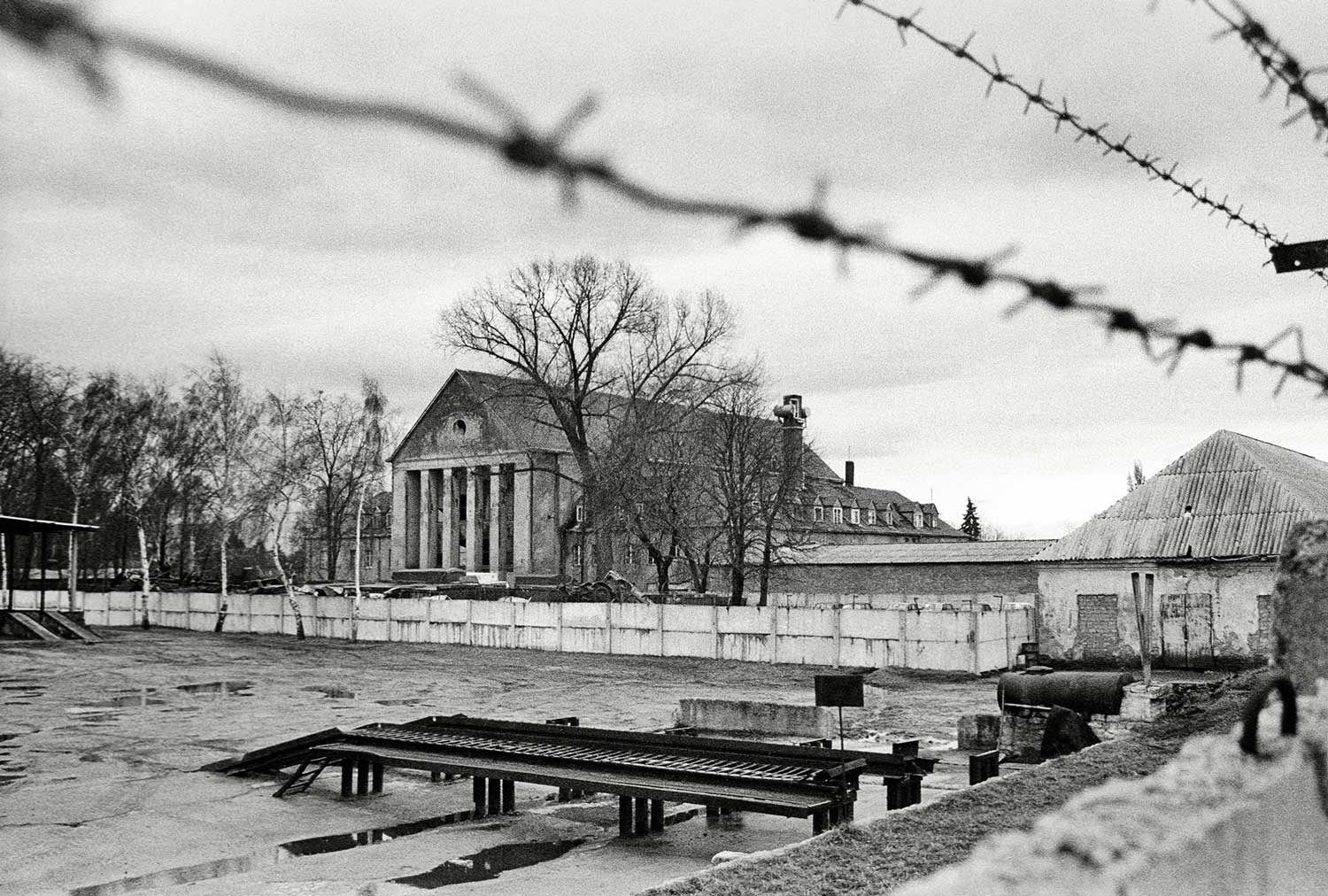The Festspielhaus (Festival Theatre) grounds as Soviet Army barracks
The Soviet army used the Festspielhaus (Festival Theatre) grounds as barracks for several battalions until 1992. The dance hall served as a gymnasium, the western barracks housed the medical battalion with operating theatres, and the soldiers lived in the other. Life on the army grounds took place behind walls and barbed wire, and the Festspielhaus (Festival Theatre) was entirely geared to military use. Most traces of the Soviet army disappeared in the course of the site’s restoration. What has survived, however, are the striking frescoes by the military artist Mikhail Vorobey, which were intended to commemorate the victory over Hitler’s Germany.
Content of this article

"Erstentdeckung" (First Discovery), February 1992.
Photo: Lothar Sprenger.
Military site for another 47 years
The use of the Festspielhaus (Festival Theatre) grounds by the Soviet Army over 47 years began shortly after the capture of Dresden on 8 May 1945. Because of its previous use and the expansion of the small Klotzsche regional airfield into a large military airfield, the site was a natural choice for barracks. Although the Festspielhaus (Festival Theatre) was included in the GDR’s central list of monuments in 1979, it remained hidden from the authorities as well as the public. Until late summer 1992, the site was home to a constant stream of several hundred Soviet soldiers, officers and civilians of the 189th Medical Battalion, the 153rd Intelligence Battalion, the 528th NBC Protection Company, paratroopers and the 602nd Special Services Company, which was a rapid reaction force directly subordinated to the Soviet Ministry of the Interior and was ready for immediate suppression in the event of unrest.
Life on the military site, which extended from Karl-Liebknecht-Straße to Boltenhagener Straße, took place behind walls and barbed wire. The Festspielhaus (Festival Theatre) was geared to military use from the cellar to the roof. The dance hall served as a gymnasium, and the soldiers were accommodated on the upper floor. The representative exhibition room facing south-east was the centre of cultural military life as the Lenin Room. The western wing of the two barracks, built in the 1930s, housed the operating theatres and other rooms for the medical battalion. The eastern wing of the building was mainly used as a residential building. The detached residential building on the main access road housed the large canteen in the basement, and officers and civilians lived on the upper floors as well as in the four small gatehouses.
Adolf’s Eva in Hellerau – Soviet myths
The actual history of the site as centre for the reform movement and art remained hidden from most soldiers. Instead, myths soon flourished that were extremely popular among the Soviet army. They served above all to uphold morale by remembering the great victory over the National Socialists, and it was considered particularly praiseworthy to have served at a location where German generals or even Adolf Hitler were said to have worked. Even today, there is a legend among former residents that Adolf Hitler’s mistress Eva Braun herself once took ballet lessons in Hellerau.
What history left behind
Most traces of use by the Soviet army disappeared in the course of the site’s restoration. The most striking relic, however, can still be found in the Festspielhaus (Festival Theatre) staircase. Large frescoes in both wings of the building commemorate the victory over Hitler’s Germany in 1945 and trace the medical battalion’s path in battle. Belarusian Mikhail Vorobey, who was serving as a military artist in Dresden at the time, created it in the summer of 1979. The frescoes were deliberately preserved during the renovation and partially restored in 2013. What nobody knew for a long time: beneath the colourful works lie other, presumably older frescoes that Vorobey painted over.
